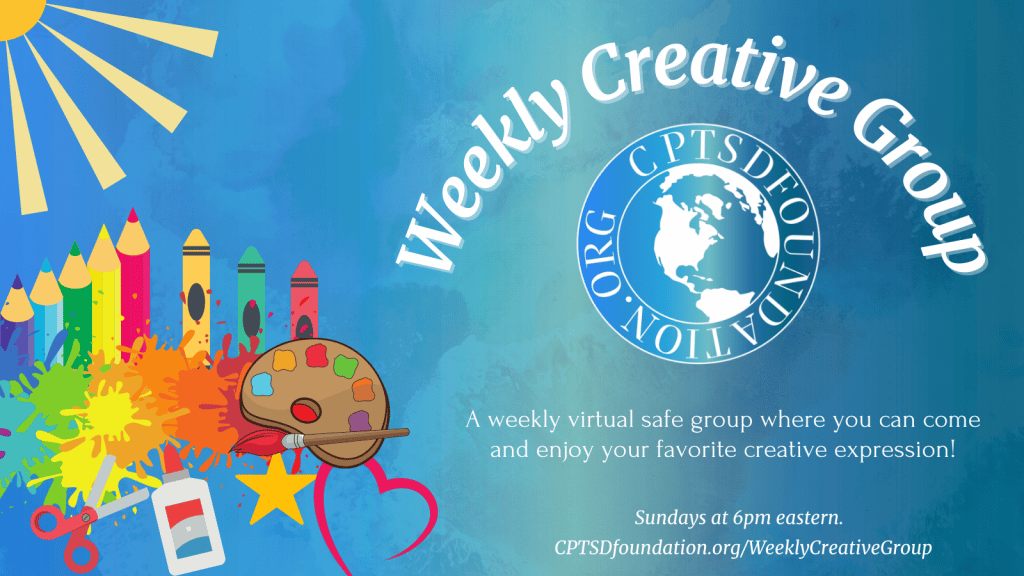What if your autistic client has immense rage? They are angry that, despite having earned a professional degree, they have been unable to secure a job commensurate with their background and education. They may spend years applying for jobs (only to get rejected constantly) or have horrible work experiences, where they are overqualified, bullied, marginalized, and even fired. They are told that they are not a good friend or relative because they prefer written, rather than verbal, communication. They know they will never get the life they thought they would have. They feel that nothing they do makes a difference. Thus, they are tired of trying, as they feel that playing by the rules got them nowhere. Their intense anger is not surprising.
This vignette may not be all that unique. Autistic people are often marginalized and excluded, not allowed to fully participate in society and live to their potential, because of the ableist world. All too often, they are not fully accepted and included. Instead, they very well may be subjected to neuroableism, “the specific type of ableism experienced by neurodivergent people due to systemic oppression in a supremacist-based society that values neurotypicalness as the ‘right’ way to be, think, and act.” Examples of neuroableism are “[a]ssuming all humans must conform to a specific way of being,” “[e]xpecting all humans to communicate in the same way,” “[j]udging and labeling neurodivergent people according to their ability to assimilate and hide their neurodivergence,” and “[r]efusing to learn to communicate with neurodivergent people in the way they need.”
Throughout their lives, autistic individuals often are expected to act like everyone else.
As autistic autism advocate Scott Frasard wrote, “[s]chools punish autistic children for stimming or not making eye contact,” “[w]orkplaces value ‘good communication skills’ over actual competence,” and “[s]ocial circles reward compliance and shun authenticity.”
Neurodiversity expert Bridgette Hebert Hamstead wrote about how inclusion often means autistic people conforming, not being accepted as their authentic selves:
Too often, inclusion does not mean changing systems to accommodate the needs of neurodivergent individuals. It means asking neurodivergent people to adapt to systems that remain rigid and unchanged. The message is not “we will meet you where you are” but rather “we will let you be here as long as you learn to act like us.” From classrooms to offices, inclusion is frequently contingent on compliance. You can be part of the group, but only if you do not rock the boat. You can join the team, but only if you keep your differences quiet. You can speak up, but only in ways that do not make others uncomfortable.
Hamstead addressed employment, which is key, as autistic people have challenges securing and maintaining employment:
In workplaces, inclusion is often performative. Employers promote diversity initiatives, host awareness events, or celebrate Neurodiversity Week, but they rarely examine the structural barriers that make the workplace inaccessible in the first place. Autistic employees are encouraged to disclose their diagnoses, but once they do, they are expected to work harder to “fit in.” Accommodations are grudgingly granted, if at all. Feedback is filtered through neurotypical standards of professionalism. There is little room for different communication styles, sensory needs, or pacing. The underlying expectation remains the same: adapt or be excluded.
Anger is natural. According to an article published by Harvard Medical School, “[in] psychological terms, anger is a normal emotional response to a person or situation you believe has treated you unfairly or has otherwise been hurtful or harmful.” Anger can be connected to “bullying, trauma, neglect, abuse, rejection, discrimination, or other struggles that may date back to childhood.” Anger can result from unfair treatment by one’s employer and denial of equal access based on illegitimate reasons, including gender and disability.
It is completely understandable that autistic people may have intense rage. They may have been constantly told that how they communicate and even how they exist is unacceptable. As Hamstead wrote:
The truth is, rage is a deeply valid and appropriate response to ableism. It is a valid response to being told your entire life that your way of being in the world is wrong. It is a valid response to being punished for sensory differences, isolated for communication styles, or gaslit by systems that refuse to accommodate your needs. It is a valid response to being infantilized, pathologized, and talked over in conversations about your own identity. It is a valid response to being denied employment, excluded from education, or subjected to harmful therapies because your brain does not function the way others expect it to.
Other sources of anger for autistic people may include sensory stimulation, others’ behavior, disturbance of routine and order, work-related and relationship-related challenges, imperfections of others, stress, and being ignored.
It may be challenging for autistic people to recognize and comprehend their feelings. Autistic people may express anger by yelling, name-calling, hitting, kicking, hurting themselves, biting, scratching, banging their heads, breaking items, and more. However, some of these actions, in modified form, may be used by autistic people to regulate their emotions. For example, some scratching could refocus an autistic person’s thoughts from anger and other negative feelings.
It is vital to address anger. Untreated anger may lead to adverse physical health consequences, including headaches, insomnia, depression, high blood pressure, heart attack, stroke, and more. It may also worsen mental health conditions, including complex PTSD and depression. In addition, as a result of rage, people may develop substance abuse disorder.
When treating an extremely angry autistic client, mental health professionals need to address their thoughts and behavior in order to make the best recommendations to the client.
- Address your thoughts and behavior:
- Create a safe neuro-affirming space, where you accept your client’s autism-related behavior.
- Understand their anger – The world was not built for autistic people. Instead, it was built by allistic (non-autistic) people for allistic people.
- Realize that an autistic client may have trouble getting through the following five stages of anger: denial, depression, anger, bargaining, and acceptance. It may be extremely difficult for them to accept their situation. They were born autistic and may have major problems because of how unaccepting and ableist the world is.
- See what could help them when they get angry. – If/when they get angry while meeting with you, you could assist them with their preferred method(s).
- Realize that you may be one of the few people who are available to talk with them. Many autistic people are socially isolated and lonely.
- If meeting in person, lend your client fidget toys, which may help your client filter out potentially distracting information, decrease anxiety, and sooth themselves. Do not get distracted and/or thrown off if your client uses a fidget toy.
- Do not:
- Get exasperated regarding their intense anger. It is much more difficult to experience their life than to hear about it for a small period of time a week.
- Get irritated with their autistic-related behavior (i.e., liking to e-mail). If you criticize them, you could trigger them, reminding them of others who have made similar remarks.
- Trigger them – Triggering them could make them angry. For example, do not use certain words that upset them.
- Be afraid of your client. Your client may be angry with how the world has treated them, not with you.
- Get taken aback if your client has trouble with emotional regulation and yells and/or cries. Autistic people often have trouble controlling their emotions.
- Make recommendations to your client (Be flexible with your recommendations. They may work for your client some days, but not others. Be sensitive to what is happening with your client in the moment.):
- Encourage them to channel their anger into productive actions. – For example, working on autistic advocacy could help improve the world so others would not have to go through the same experiences as an autistic client. An autistic client can advocate for autism acceptance through various means, including writing, creating videos, speaking, and more.
- Recommend a stop-think technique, which is similar to cognitive behavioral therapy (CBT). Under the stop-think approach, a person stops and speculates whether their thoughts are correct or beneficial, challenges incorrect or non-beneficial thoughts, and develops alternative thoughts.
- Encourage the creation of an action plan that your client can use regarding anger. The plan could involve methods to distract themselves from situations, remove themselves from situations, avoid incidents that could upset them, and adjust their routines.
- Suggest that your client practice radical acceptance. Radical acceptance, which is from Dialectic Behavior Therapy, is completely accepting reality instead of fighting it (even if the situation is unfair). Accepting does not mean approval or agreement. Instead, it means acknowledging that something happened. Radical acceptance prevents pain from turning into suffering, and it prevents such thoughts as “This is unfair?” As Hamstead wrote:
“Radical acceptance is not about giving up or resigning ourselves to suffering. It is about recognizing that who we are is valid, even if we do not fit into the boxes society expects us to occupy. It means accepting our brains, our bodies, our patterns, and our needs as they are, without needing to justify or explain them. It means allowing ourselves to stop performing, stop apologizing, and stop trying to become someone we are not. When we accept ourselves as we are in this moment, with all of our complexities and contradictions, we create space for real change to happen. Not change that comes from pressure or shame, but change that comes from growth, care, and curiosity.”
She also wrote about practicing radical acceptance:
“We become more present in our lives, less focused on proving our worth and more attuned to what we actually need and want. We begin to create lives where we can thrive—not in spite of our neurodivergence, but because we are finally living in alignment with it.”
Her suggestions on how neurodivergent adults can practice radical acceptance are:
- “Notice your internal dialogue.”
- “Allow yourself to rest without earning it.”
- “Unlearn harmful definitions of success.”
- “Practice saying no.”
- “Create rituals of self-affirmation.”
- “Surround yourself with people who affirm your neurodivergence.”
- “Let your body and brain lead.”
- “Accept that some days will be harder than others.”
- “Release the idea of a ‘perfect version’ of you.”
- “Return to acceptance again and again.”
You can educate your client about and help them with radical acceptance. For example, you can use a worksheet and help your client determine what self-affirmation moments would most help them.
However, recognize that your client may have a difficult time with radical acceptance, as in their lived experience, many may not want them and their skills. In addition, realize that your client’s immense anger can motivate them to try to have the world be more accepting of autistic people.
- Suggest exercise to your client, as physical activity can assist with emotional regulation and stress. However, as autistic people are more likely to be overweight or obese than others, recommendations to exercise could irritate your client. They may know about their weight issues and feel they are going to a therapist for mental health issues, not to be told to exercise.
- Encourage your client to relax. Ways to relax include deep breathing, tai chi, and other techniques.
- Encourage your client to attend a support group, as it may be beneficial.
Autistic people have every right to be angry, as they live in a world that was not constructed for them. However, they can be extremely valuable if they are respected, not marginalized. Have empathy for them, as you should for anybody.
Cover Image Created by AI
Guest Post Disclaimer: Any and all information shared in this guest blog post is intended for educational and informational purposes only. Nothing in this blog post, nor any content on CPTSDfoundation.org, is a supplement for or supersedes the relationship and direction of your medical or mental health providers. Thoughts, ideas, or opinions expressed by the writer of this guest blog post do not necessarily reflect those of CPTSD Foundation. For more information, see our Privacy Policy and Full Disclaimer.




